Take your steak night to the next level with this easy but impressive compound butter for steak.
Infused with garlic, fresh herbs, and a secret special ingredient, this compound butter adds so much flavor to steak, and makes an impressive presentation with very little effort. Below I’m going to explain why this butter goes so well with steak, and also how to make compound butters more generally, how to store them, and how to use them.
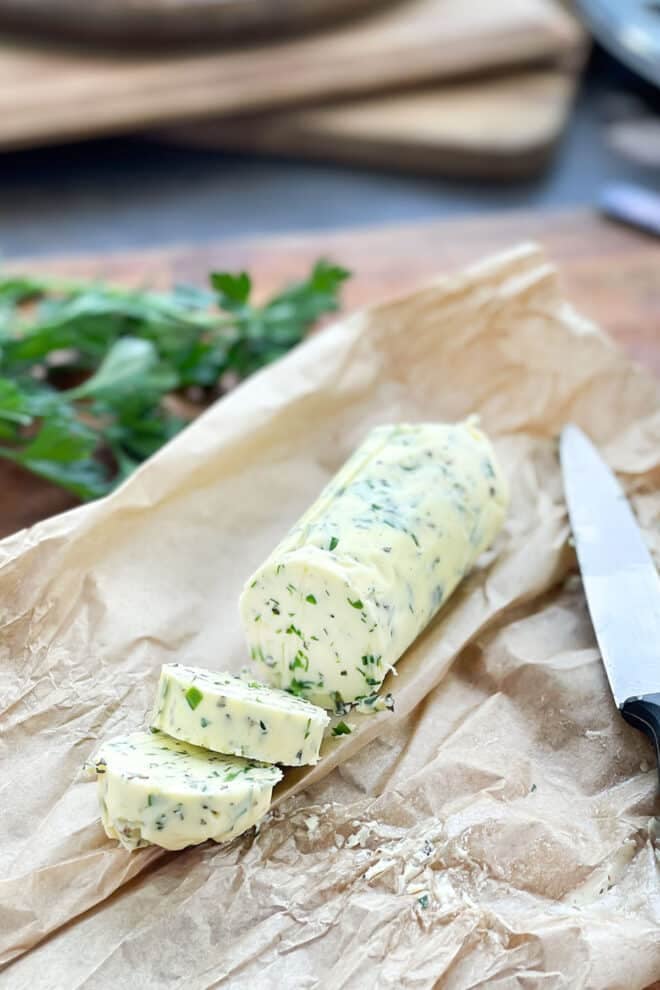
What Is Compound Butter?
A compound butter is simply butter that has been combined with additional ingredients for extra flavor. If you’ve ever made garlic butter, then you already have the basics down. Compound butters can be made with all sorts of herbs and seasonings. You can even make sweet versions which are great on breakfast foods like pancakes.
Why Is This Butter So Good On Steak?
This butter is seriously amazing on steak. In addition to some salt and pepper, you’ll be seasoning it with fresh garlic, parsley, chives, and rosemary. And there’s an extra special ingredient: Cognac!
Cognac is a type of brandy from the Cognac region of France. It is known to pair really well with steak, and in fact, it’s one of the ingredients in the classic dish, Steak au Poivre. Adding a little bit of Cognac to this butter therefore gives it that bit of classic steak-pairing flavor. Note: If you don’t have Cognac, you can substitute another type of brandy or fortified sweet wine, like a port, sherry, or marsala.
Preparing Parsley For Compound Butters
Because this is considered a finishing butter that is added to the steak after being cooked, and not necessarily a butter you’d cook with (although you definitely can!), you’ll want to remove some of the chlorophyll from the freshly minced parsley. The chlorophyll is what gives parsley its green color, but it can often bleed into the butter after it’s been minced. So, if you don’t want green tinted butter, follow this extra preparation step. If you like the idea of the pale green butter, then you can skip it.
Place the freshly minced parsley onto a clean kitchen towel or three layers of paper towel. Close the towel around the parsley to create a little “beggar’s purse” shape and rinse under cool running water for about 30 seconds, gently squeezing the bundle, which will release the chlorophyll.
Transfer the rinsed parsley to a clean, dry paper towel and spread in a single layer as best you can. Let this sit for about 10 minutes, and then add it to the butter.
Making Compound Butter
You’ll want to start with softened butter so that the ingredients are able to be mixed easily. Then in a bowl, combine the butter, salt, pepper, garlic, parsley, chives, rosemary, and cognac until well mixed.
Transfer the butter to a ramekin or form into a log using parchment or plastic wrap as shown below. Refrigerate at least 3 hours before serving or slicing. This allows the butter to solidify and the flavors to meld together.
How To Use Compound Butter
As mentioned, this butter pairs best with a perfectly cooked steak. But, it can also go on other cuts of cooked beef, or on chicken, fish, shrimp, or vegetables as a finishing butter. In addition, it can also be used during cooking as a baking or basting butter for savory dishes.
What you do to use compound butter as a finishing butter is to take it out of the fridge or freezer and then slice it. One 1/4 inch since is typically a serving. If the butter is frozen, slice it using a sharp knife 5-10 minutes before you’re going to serve it so that it will thaw a little bit but still be cold. If the butter was in the fridge, you can use it immediately. Once you have the slices, you put them directly onto the cooked food, right before serving. The butter will start to melt a bit from the heat of the food, but will keep its shape. As you’re eating, the butter continues to melt and gives it the feeling of a sauce for the food.
How To Store Compound Butters
No matter what variation of compound butter recipe you’re using, you want to make sure you are storing it properly.
I like to roll my butters into logs so that even when chilled, I can get nice slices to put on top of my food. First, get out either a piece of plastic wrap or parchment paper and lay it on the counter. Scoop your delicious butter mixture onto the center of it.

You’ll want to roll it up so that it makes a log of butter.
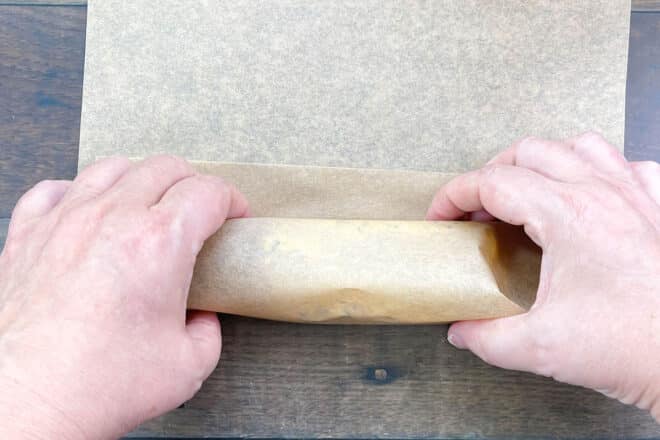
Then, twist the ends tightly to secure.
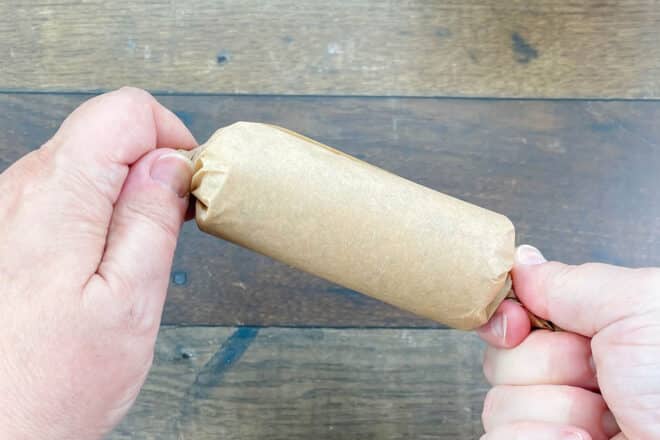
This can then go into an air-tight container or a sturdy zip-top bag for storage.
The compound butter will stay good stored in the refrigerator for up to five days. You can also keep it in the freezer for up to three months. After that, the butter can start to take on odors from the fridge or freezer.
More Compound Butter Recipes
- The Best Garlic Butter
- Compound Butter for Turkey
- Truffle Butter
- Spiced Pumpkin Butter Spread
- Cowboy Butter
- Corn on the Cob Butter
Podcast Episode On Making Compound Butters
Listen to learn how to make this recipe, along with some great tips from Christine:
Listen to more Recipe of the Day episodes here.
Print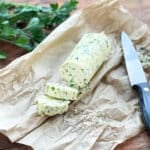
Compound Butter for Steak Recipe
- Prep Time: 10 minutes
- Chill Time: 3 hours
- Cook Time: 0 minutes
- Total Time: 3 hours 10 minutes
- Yield: 1/2 cup 1x
- Category: Condiment
- Method: Mix
- Cuisine: American
DESCRIPTION
This recipe can easily be doubled or tripled and is just as good on fish, potatoes, or veggies as it is on top of steak.
Ingredients
- 1/2 cup (1 stick) unsalted butter, room temperature
- 1/4 tsp. salt
- 1/4 tsp. ground black pepper
- 1 garlic clove, peeled, minced
- 1 Tbsp. minced fresh parsley, rinsed and dried well
- 1 Tbsp. minced fresh chives
- 2 tsp. minced fresh rosemary leaves
- 1 tsp. cognac
Instructions
- In a small bowl combine butter, salt, pepper, garlic, parsley, chives, rosemary, and cognac until well mixed.
- Transfer butter to a Ramekin or form into a log using parchment or plastic wrap.
- Refrigerate at least 3 hours before serving or slicing.
Notes
The butter will keep for up to 5 days in the fridge or 3 months in the freezer.


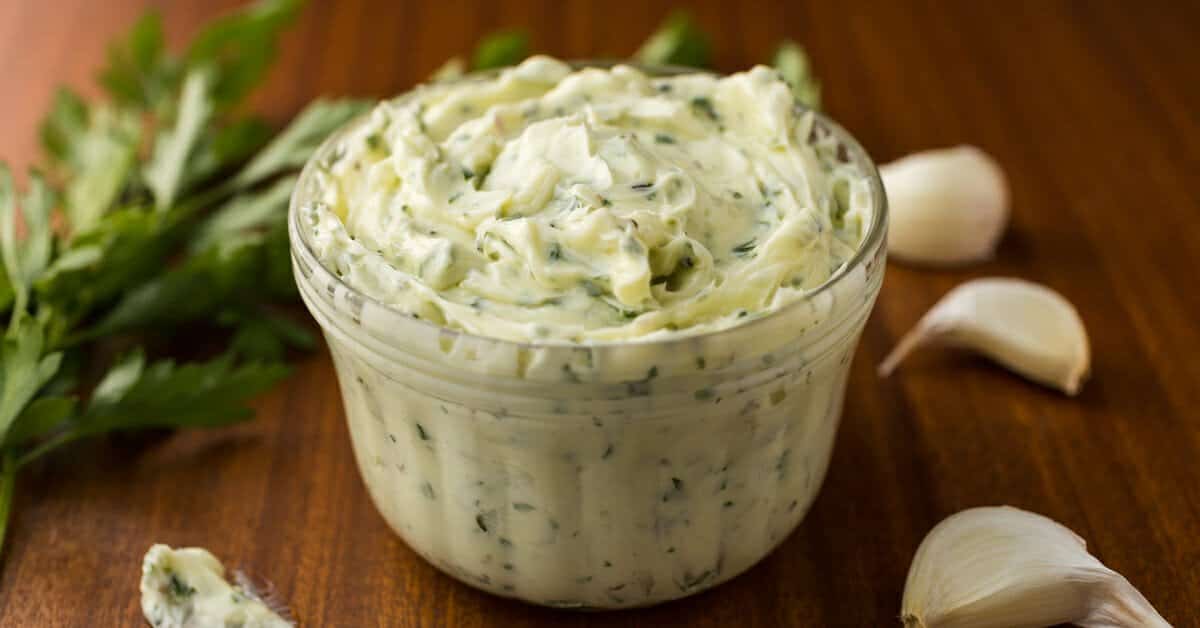
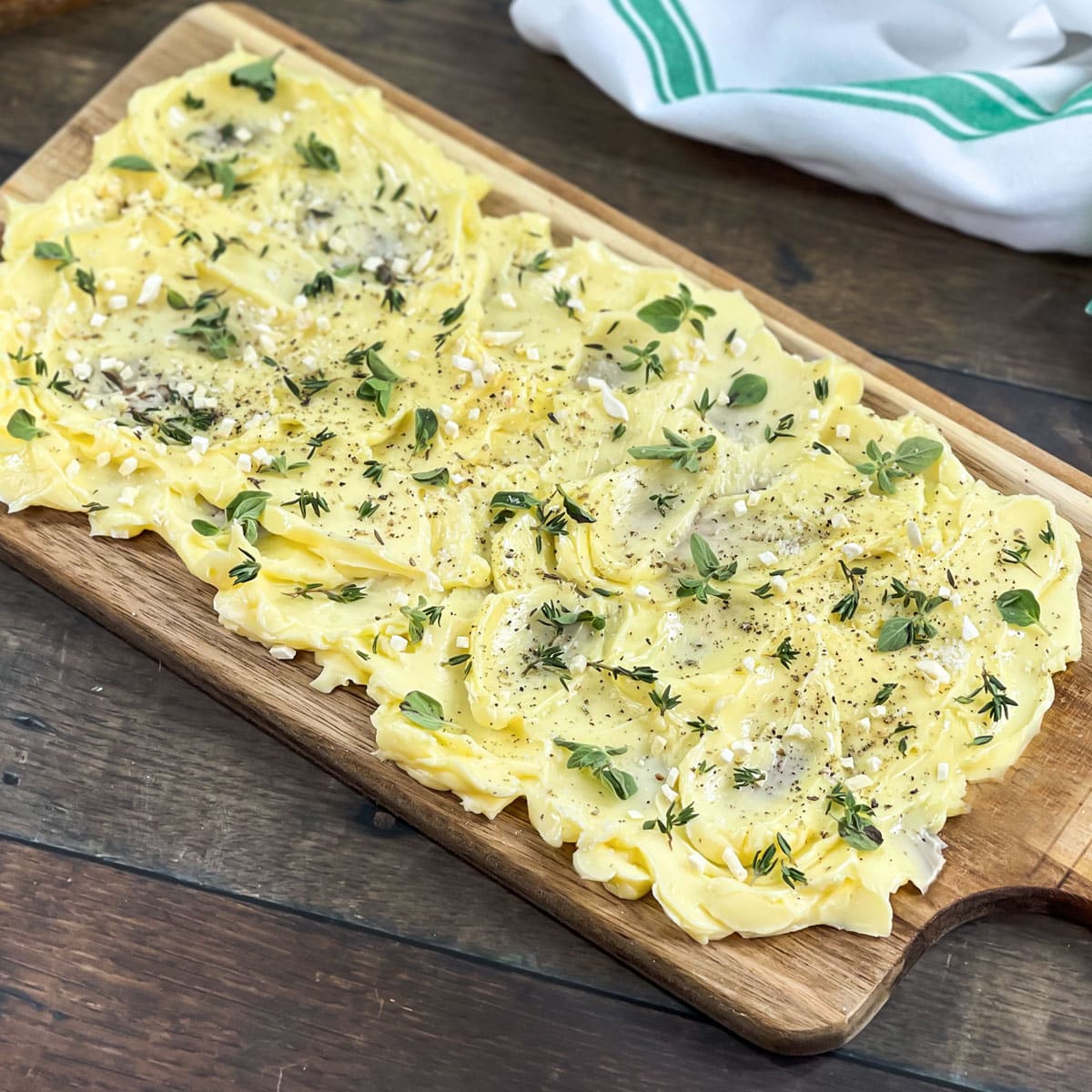
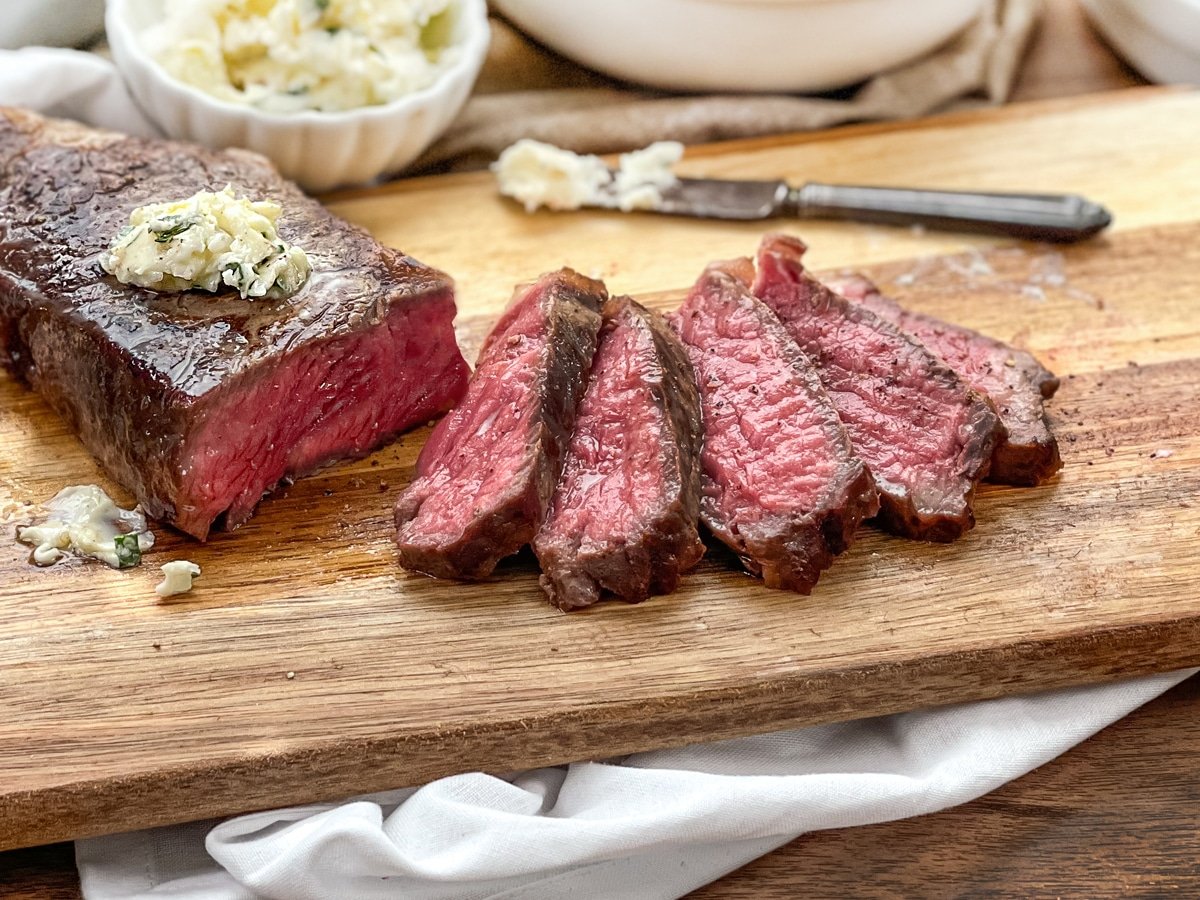
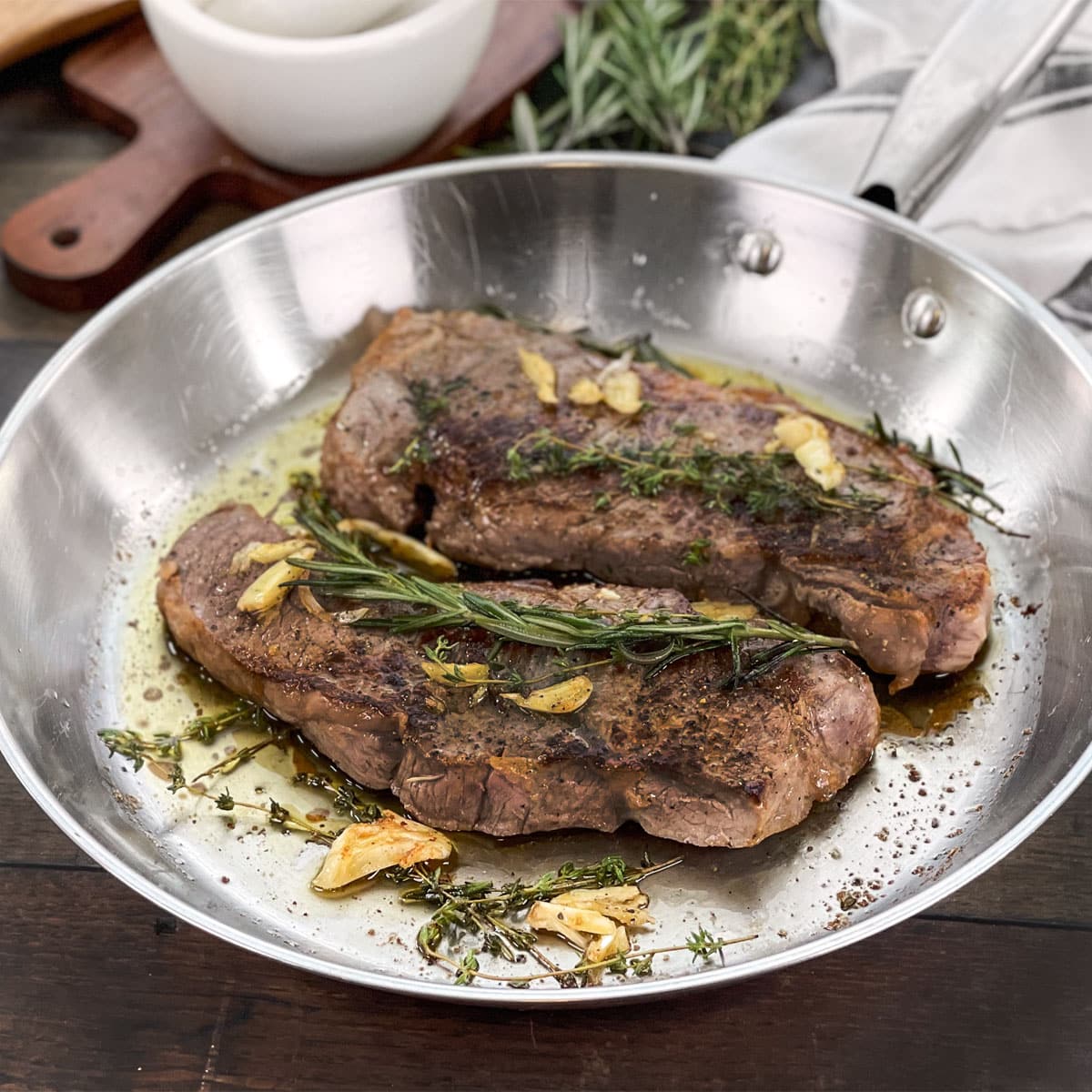



















The Cognac in here is perfect. Loved it so much!
Connie, Thank you, and I agree. It’s subtle but makes such a difference.